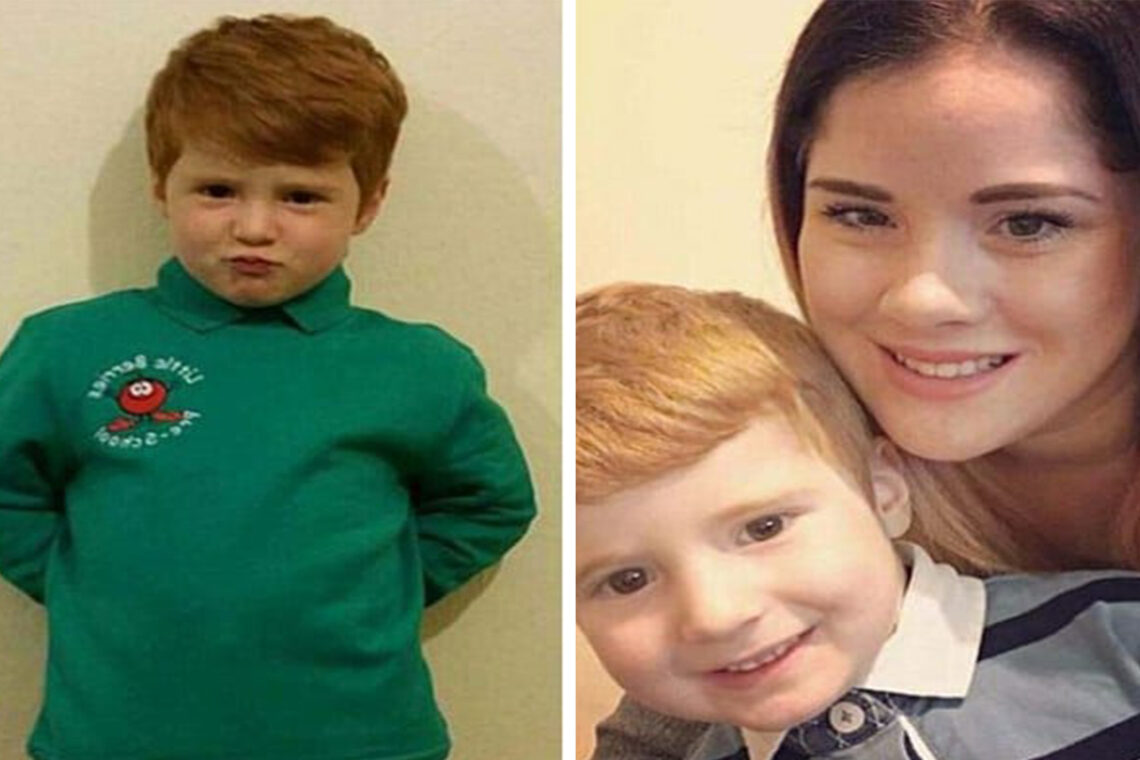
Bullying is a term that elicits strong negative feelings in many, symbolizing a behavior that is universally disdained. Yet, despite our best efforts to address and eliminate it, bullying remains a pervasive issue that we struggle to eradicate completely. It manifests in various settings, from professional environments to social groups, but it is most prominently observed among children. While children are still forming their moral compass and may not fully grasp the implications of their actions, this does little to comfort those who suffer as a result of their behavior.
The emotional toll of bullying can be particularly devastating for young victims. Take, for instance, the story of a young boy named Noah. He was just three years old when he became the target of ridicule because of his unique hair color. The incident occurred on a bus where Noah and his mother, Lauren, encountered a group of teenagers who began to mock him for having ginger hair. The cruel remarks escalated, with some teenagers expressing extreme sentiments about children with his hair color. The harshness of their words would have a lasting impact on young Noah, even at such a tender age.
Despite his youth, Noah was perceptive enough to grasp the negativity directed at him, leading to feelings of confusion and sadness. He questioned his appearance, asking his mother why he did not have hair like his brother Charlie, who had a different color. His mother was left heartbroken by her son’s distress and the weight of his innocent questions.

In a moment of frustration and a desire for change, Lauren took to social media to share her experience. Her post resonated with many, capturing the struggles that parents face when their children are subjected to bullying. She wrote about Noah’s plight and his longing to be accepted for who he is, emphasizing that it is unacceptable to bully someone over their appearance—now or ever.
The online response was overwhelming. Thousands of individuals expressed their solidarity, sharing their own experiences and offering words of encouragement to Noah. Many parents, in particular, empathized with Lauren’s pain and joined the conversation, advocating for kindness and acceptance among children. This digital support network highlighted the communal effort to confront and combat bullying in all its forms.
Lauren’s personal experience is not an isolated incident; rather, it is indicative of a larger, ongoing issue that affects countless children across the globe. The reality of bullying remains a significant challenge that requires consistent and multifaceted approaches to address effectively. It is crucial to acknowledge the experiences of victims like Noah and understand the psychological impact bullying can have, even at such a young age.
While Lauren sought accountability from the teenagers involved, aiming for an apology from one of the culprits, her story serves as a reminder that bullying can leave deep scars that extend far beyond a single incident. The emotional ramifications can influence a child’s self-esteem and overall sense of worth, creating lasting effects that may follow them into adulthood.
As parents, educators, and members of society, it is our collective responsibility to stand against bullying. Creating environments that promote empathy and respect is essential in ensuring that children learn the values of kindness and acceptance. Open dialogues about differences—be it in appearance, abilities, or backgrounds—can cultivate a culture of understanding and compassion among young individuals.
In schools, implementing comprehensive anti-bullying programs can play a significant role in addressing this issue. These programs should not only focus on punishing the offenders but also educate all students about the importance of inclusivity and the harm caused by negative behavior. Workshops that teach conflict resolution and emotional intelligence can equip children with the skills they need to navigate social interactions more effectively.
Furthermore, it is vital to encourage parents to engage in conversations with their children about bullying and its consequences. Creating a safe space for children to express their feelings can help them articulate their experiences, whether they are the ones being bullied or are witnesses to such behavior. Parents should foster resilience in their children and empower them to speak out against bullying while also knowing when to seek help.
The journey toward eradicating bullying requires a commitment from everyone involved—children, parents, educators, and community leaders. By holding individuals accountable for their actions and reinforcing the idea that kindness should prevail over cruelty, we can begin to dismantle the culture of bullying that has persisted for far too long.
Every story of bullying, like Noah’s, underscores the urgent need for change. It reminds us that we must work collectively to create a world where children feel safe and accepted for who they are. By nurturing an environment filled with compassion and understanding, we can help ensure that the scars left by bullying become less common, paving the way for a future where acceptance reigns and bullying is but a distant memory.
In conclusion, the battle against bullying is far from over, but through awareness, education, and a steadfast commitment to promoting kindness, we can make significant strides toward a more inclusive society. Let us all take a stand against bullying, not just for ourselves, but for the future generations who deserve to grow up free from fear and prejudice. Together, we can cultivate a culture of respect and compassion, making bullying an issue of the past.